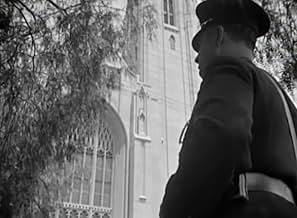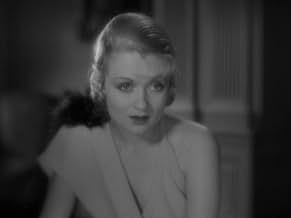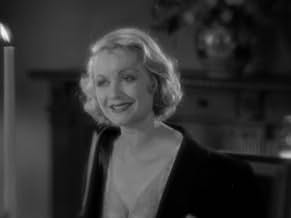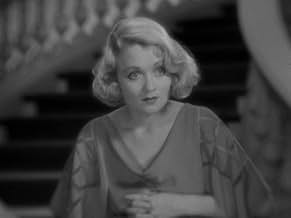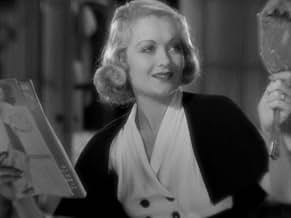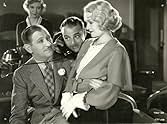NOTE IMDb
7,0/10
2,9 k
MA NOTE
Ajouter une intrigue dans votre langueThe career of a waitress takes off when she meets an amiable drunken Hollywood director.The career of a waitress takes off when she meets an amiable drunken Hollywood director.The career of a waitress takes off when she meets an amiable drunken Hollywood director.
- Réalisation
- Scénario
- Casting principal
- Nommé pour 1 Oscar
- 3 victoires et 1 nomination au total
George Reed
- Undetermined Secondary Role
- (scènes coupées)
Alice Adair
- Undetermined Secondary Role
- (non crédité)
Eddie 'Rochester' Anderson
- James - Max's Butler
- (non crédité)
Sam Armstrong
- Undetermined Secondary Role
- (non crédité)
Zeena Baer
- Secretary to Julius Saxe
- (non crédité)
King Baggot
- Department Head
- (non crédité)
Gerald Barry
- John Reed - an Actor
- (non crédité)
Floyd Bell
- Undetermined Secondary Role
- (non crédité)
Veda Buckland
- Nana - Jackie's Nursemaid
- (non crédité)
Nicholas Caruso
- Chef at Brown Derby
- (non crédité)
Lita Chevret
- Actress Filming on Movie Set
- (non crédité)
Avis à la une
Another film that deserves a wider viewership and a DVD release, "What Price Hollywood?" looks at the toll Hollywood takes on the people who make it possible.
Adela Rogers St John wrote the Oscar-nominated story of a fading genius of a director, destroyed by drink, who launches one last discovery into the world. Lowell Sherman, himself both a director and an alcoholic, played the sad role that had been modeled, in part, on his own life. (Sherman's brother-in-law, John Barrymore, was also a model, as was the silent film director Marshall Neilan.) The divinely beautiful Constance Bennett plays the ambitious Brown Derby waitress who grabs her chance. Neil Hamilton, paired to great effect with Bennett that same year in "Two Against the World," plays the east-coast polo-playing millionaire who captures Bennett's heart without ever understanding her world.
George Cukor directed the film for RKO, and already the seeds of his directorial genius can be seen. Wonderful montages and double exposures chart Bennett's rise and fall as "America's Pal," and I've rarely seen anything as moving as the way Cukor presented Sherman's death scene, using quick shot editing, exaggerated sound effects and a slow motion shot. As startling as it looks today, one can only imagine the reaction it must have caused over 70 years earlier, before audiences had become accustomed to such techniques.
While the romantic leads are solid--Bennett, as always, especially so--and Gregory Ratoff is mesmerizing as the producer, hats must be doffed to Lowell Sherman for his Oscar-calibre performance. The slide from charming drunk to dissolute bum is presented warts and all, and a late scene in which the director examines his drink-ravaged face in the mirror is powerful indeed. It's hard to imagine what it must have been like for Sherman to play such a role and it was, in fact, one of the last roles he took for the screen, before concentrating on directing--then dying two years later of pneumonia.
When David O. Selznick made "A Star is Born" for United Artists five years later, four years after leaving RKO, the RKO lawyers prepared a point-by-point comparison of the stories, recommending a plagiarism suit--which was never filed. The later movie never credited Adela Rogers St John or any of the source material of "What Price Hollywood?" for its own screenplay, which was written by Dorothy Parker from, supposedly, an idea of Selznick's.
"What Price Hollywood?" is a great source for behind-the-scenes tidbits--Cukor fills the screen with images of on-set action (or inaction), with various crew waiting about as they watch the film-in-a-film action being filmed. This movie works as history and as innovation, but it also works on the most important level, as a well-told story.
Adela Rogers St John wrote the Oscar-nominated story of a fading genius of a director, destroyed by drink, who launches one last discovery into the world. Lowell Sherman, himself both a director and an alcoholic, played the sad role that had been modeled, in part, on his own life. (Sherman's brother-in-law, John Barrymore, was also a model, as was the silent film director Marshall Neilan.) The divinely beautiful Constance Bennett plays the ambitious Brown Derby waitress who grabs her chance. Neil Hamilton, paired to great effect with Bennett that same year in "Two Against the World," plays the east-coast polo-playing millionaire who captures Bennett's heart without ever understanding her world.
George Cukor directed the film for RKO, and already the seeds of his directorial genius can be seen. Wonderful montages and double exposures chart Bennett's rise and fall as "America's Pal," and I've rarely seen anything as moving as the way Cukor presented Sherman's death scene, using quick shot editing, exaggerated sound effects and a slow motion shot. As startling as it looks today, one can only imagine the reaction it must have caused over 70 years earlier, before audiences had become accustomed to such techniques.
While the romantic leads are solid--Bennett, as always, especially so--and Gregory Ratoff is mesmerizing as the producer, hats must be doffed to Lowell Sherman for his Oscar-calibre performance. The slide from charming drunk to dissolute bum is presented warts and all, and a late scene in which the director examines his drink-ravaged face in the mirror is powerful indeed. It's hard to imagine what it must have been like for Sherman to play such a role and it was, in fact, one of the last roles he took for the screen, before concentrating on directing--then dying two years later of pneumonia.
When David O. Selznick made "A Star is Born" for United Artists five years later, four years after leaving RKO, the RKO lawyers prepared a point-by-point comparison of the stories, recommending a plagiarism suit--which was never filed. The later movie never credited Adela Rogers St John or any of the source material of "What Price Hollywood?" for its own screenplay, which was written by Dorothy Parker from, supposedly, an idea of Selznick's.
"What Price Hollywood?" is a great source for behind-the-scenes tidbits--Cukor fills the screen with images of on-set action (or inaction), with various crew waiting about as they watch the film-in-a-film action being filmed. This movie works as history and as innovation, but it also works on the most important level, as a well-told story.
This early effort by director George Cukor had such resonance that it was remade three times as A STAR IS BORN, so it lives on to satisfy the curiosity of those who admire one or more of the later productions. What holds it up after all these years are a strong and realistic performance by Lowell Sherman as a successful Hollywood film director whose alcoholism is destroying his career, decent and sometimes brilliant work by ever-stylish Constance Bennett as the ambitious waitress who becomes an overnight star, beautiful and poetic montages by Slavko Vorkapich, a generally witty and clever script by a team of about eight writers including Adela Rogers St. John and Gene Fowler, and some beautifully directed intimate scenes including the opening in which Bennett dresses for work, copying the beauty tips advertised in the fan magazine she is reading. Highlights: the screen test in which Bennett repeatedly fails to gracefully descend a staircase, deliver one line and then react to the sight of a dead body outside camera range; the filming of a nightclub scene in which Bennett delivers a love song in French (a la Dietrich in MOROCCO) as she strolls among the seated patrons. When you think about it, Bennett is really too sophisticated and worldly for this part, which is why it worked much better for the homespun Janet Gaynor five years later. It really doesn't make sense that a lady who can handle herself with complete ease after being dragged to a movie premiere and unexpectedly shoved in front of a microphone would suddenly turn into a klutz in front of a movie camera in a studio screen test. At one point Bennett is seen to converse in flawless, fluent French and we can only wonder how a lowly waitress with naïve dreams of movie stardom ever got that kind of linguistic education. The only explanation could be that the casting of Bennett required compromises. In any case, her natural charm carries her through.
At times the story drags. Neil Hamilton as the stuffed shirt husband adds to the dead weight. The sound quality in the outdoor scenes is weak and tinny. Gregory Ratoff as a studio chieftain has fun but his accent is a bit too thick given the limitations of the recording techniques of the time. Louise Beavers, as always, enlivens her small role as Bennett's maid.
At times the story drags. Neil Hamilton as the stuffed shirt husband adds to the dead weight. The sound quality in the outdoor scenes is weak and tinny. Gregory Ratoff as a studio chieftain has fun but his accent is a bit too thick given the limitations of the recording techniques of the time. Louise Beavers, as always, enlivens her small role as Bennett's maid.
"What Price Hollywood?" is one of my favorite films of the 1930s. With loads of drama, glamour to spare, and some romance too, this movie is one of the best behind-the-scenes looks at the old Hollywood studio system that was ever made. Constance Bennett, looking her radiant best, plays the lead role with finesse. Lowell Sherman also turns in a powerful performance as a washed-up director. This movie was the basis for "A Star is Born." All in all, one great film.
What that lady needed was a good script and a fine director. She had both in "Our Betters." And she had it here. And this one will break your heart.
The on-the-set ambiance is very plausible. Lowell Sherman is excellent as the tippling director who discovers waitress Bennett and becomes a heavier drinker. Gregory Ratoff is superb as the initially brusque but increasingly sympathetic producer Saxe.
Conusance Bennett is likable as the ambitious waitress. She gets us to smile as she starts out as a crummy actress but works hard at it. And she is directed to a superb performance when things for Sherman, her, and her husband Neil Hamilton get tough.
The on-the-set ambiance is very plausible. Lowell Sherman is excellent as the tippling director who discovers waitress Bennett and becomes a heavier drinker. Gregory Ratoff is superb as the initially brusque but increasingly sympathetic producer Saxe.
Conusance Bennett is likable as the ambitious waitress. She gets us to smile as she starts out as a crummy actress but works hard at it. And she is directed to a superb performance when things for Sherman, her, and her husband Neil Hamilton get tough.
Pre-Code insider's look at Hollywood, a precursor to all those STAR IS BORN films.
Constance Bennett is a waitress at Hollywood's famed Brown Derby restaurant specifically for the chance of meeting the right contact to help her break into films. In walks Lowell Sherman, a tipsy but famous director. They take a shine to each other and he wakes up the next morning to find her asleep on his living room couch. He invites her to test for a small part in a film, but she's terrible.
She works all night on her little scene and finally gets it right. Of course she makes a hit and becomes a big star. She's never romantically involved with Sherman, who's more interested in the bottle. She has everything she ever wanted and marries a stuffy rich boy (Neil Hamilton) who never fits in.
Eventually Bennett loses the husband and also loses Sherman as his career slips away because of his drinking. The years go by. One night she gets a call to come get Sherman out of jail where he's been locked up for be drunk and for skipping out on a bar bill. She takes him home and cleans him up, but it's too late.
Hard-hitting story stunned a lot of viewers who wanted to believe that the lives of the Hollywood stars was a bed of roses. Bennett and Sherman are superb. Hamilton is fine as the rich husband. Also good are Gregory Ratoff as the producer and Louise Beavers as the devoted maid.
There were insider Hollywood stories before this. Marion Davies' comedy SHOW PEOPLE showed how fame can go to an actress' head. The following STAR IS BORN films borrowed heavily from this one but the heroines in these (Janet Gaynor, Judy Garland, Barbra Streisand, and the 2018 version) were all married to the tragic figure.
Perhaps a bigger studio than RKO could have secured the Oscar nominations Lowell Sherman and Constance Bennett deserved for this film.
Constance Bennett is a waitress at Hollywood's famed Brown Derby restaurant specifically for the chance of meeting the right contact to help her break into films. In walks Lowell Sherman, a tipsy but famous director. They take a shine to each other and he wakes up the next morning to find her asleep on his living room couch. He invites her to test for a small part in a film, but she's terrible.
She works all night on her little scene and finally gets it right. Of course she makes a hit and becomes a big star. She's never romantically involved with Sherman, who's more interested in the bottle. She has everything she ever wanted and marries a stuffy rich boy (Neil Hamilton) who never fits in.
Eventually Bennett loses the husband and also loses Sherman as his career slips away because of his drinking. The years go by. One night she gets a call to come get Sherman out of jail where he's been locked up for be drunk and for skipping out on a bar bill. She takes him home and cleans him up, but it's too late.
Hard-hitting story stunned a lot of viewers who wanted to believe that the lives of the Hollywood stars was a bed of roses. Bennett and Sherman are superb. Hamilton is fine as the rich husband. Also good are Gregory Ratoff as the producer and Louise Beavers as the devoted maid.
There were insider Hollywood stories before this. Marion Davies' comedy SHOW PEOPLE showed how fame can go to an actress' head. The following STAR IS BORN films borrowed heavily from this one but the heroines in these (Janet Gaynor, Judy Garland, Barbra Streisand, and the 2018 version) were all married to the tragic figure.
Perhaps a bigger studio than RKO could have secured the Oscar nominations Lowell Sherman and Constance Bennett deserved for this film.
Le saviez-vous
- AnecdotesThis film bears such a striking resemblance to Une étoile est née (1937) that it is often considered "the original version" of that often remade classic. In fact, David O. Selznick, who produced both this film and Star is Born, was threatened with a lawsuit by this film's writers, claiming plagiarism.
- GaffesWhen the screen shows a newspaper gossip column, part of an item relating a joke about a Jewish boy and a bird can be seen. Several months later, another gossip column shows the identical item.
- Crédits fousThere is a "by" credit to Gene Fowler and Rowland Brown after the title shows, but there is also a "screenplay by" credit to Jane Murfin and Ben Markson, without leaving any clear explanation or context as to what "by" actually means. But the reality was that Fowler and Brown wrote the real screenplay, with Murfin and Markson providing the continuity.
- ConnexionsFeatured in David O. Selznick: 'Your New Producer' (1935)
- Bandes originalesThree Little Words
(1930) (uncredited)
Music by Harry Ruby
Part of a medley played during the opening credits
Meilleurs choix
Connectez-vous pour évaluer et suivre la liste de favoris afin de recevoir des recommandations personnalisées
- How long is What Price Hollywood??Alimenté par Alexa
Détails
- Date de sortie
- Pays d’origine
- Langues
- Aussi connu sous le nom de
- Hollywood Madness
- Lieux de tournage
- Société de production
- Voir plus de crédits d'entreprise sur IMDbPro
Box-office
- Budget
- 411 676 $US (estimé)
- Durée
- 1h 28min(88 min)
- Couleur
- Rapport de forme
- 1.37 : 1
Contribuer à cette page
Suggérer une modification ou ajouter du contenu manquant


